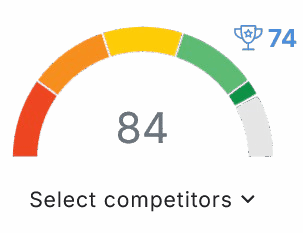You can quickly master NeuronWriter on WordPress by first setting up your NeuronWriter account and connecting it to your WordPress site with an application password. Create and manage content projects centered on SEO goals, optimize your content using AI-driven suggestions, and publish directly to WordPress with a seamless sync to preserve formatting and metadata. Enhancing your posts with multimedia and troubleshooting integration issues will boost your workflow. Keep going to access advanced tips and tools for smoother content creation.
Key Takeaways
- Set up and verify your NeuronWriter account, then connect it to WordPress using domain, username, and application password with admin privileges.
- Create and manage content projects in NeuronWriter, leveraging keyword-driven planning and intelligent internal link suggestions for SEO optimization.
- Publish content directly to WordPress from NeuronWriter with two-way sync to maintain formatting and SEO metadata accuracy.
- Optimize content using AI-driven tools in NeuronWriter focusing on keyword use, readability, and updating older posts for sustained relevance.
- Troubleshoot integration by verifying credentials, updating plugins, and testing syncs on staging sites to prevent errors and ensure smooth performance.
Setting Up Your NeuronWriter Account

Before you plunge into optimizing content, you’ll need to set up your NeuronWriter account by signing up on their official website using your email and a password.
After registering, complete the essential account verification through the link sent to your email—this step grants full access to NeuronWriter’s tools. Additionally, understanding the content scoring system will help you create high-quality content that adheres to SEO best practices.
Once verified, log in to explore your dashboard. The dashboard navigation is designed to help you quickly create or access projects, manage settings, and utilize SEO and AI content assistance features. You can also familiarize with the user interface to make the most of the platform.
By familiarizing yourself with this space, you can efficiently serve your audience with well-optimized content.
Take the time to select a plan that suits your needs, ensuring you have the right tools and API access to support your mission of delivering value to others.
Connecting Neuronwriter With WordPress
When you connect NeuronWriter with WordPress, you facilitate seamless content synchronization that saves time and enhances your SEO workflow. This API integration lets you leverage NeuronWriter features to optimize and publish content effortlessly. To get started, verify you have a domain-level project in NeuronWriter and enable application password authentication in WordPress.
Then, input your domain, username, and application password into NeuronWriter’s settings. Accessing the WordPress dashboard to manage users is a necessary step in setting up this integration. Additionally, the platform’s advanced AI capabilities ensure that your content is not only optimized but also engaging for readers.
Key benefits include:
- Two-way sync preserving formatting and SEO metadata
- Bulk updating multiple posts simultaneously
- Automation via Zapier and Albato integrations
- Collaboration tools for smooth team workflows
- Error logging and version control for reliable syncing
Connecting these platforms empowers you to serve your audience with well-optimized, timely content.
Creating and Managing Content Projects

Although managing multiple content initiatives can feel overwhelming, NeuronWriter simplifies the process by providing centralized project hubs that keep everything organized and accessible.
You can easily view and track all your content projects from a single dashboard, enhancing project organization and reducing confusion. NeuronWriter’s content planning features include a content calendar integration, letting you visualize timelines and align publishing schedules perfectly. Additionally, the platform’s intelligent internal link suggestions improve content relevance and aid search engine understanding.
Assign tasks and share resources effortlessly, fostering smooth collaboration if you’re working with a team. The platform’s keyword-driven planning helps you generate headers and content ideas based on top competitors, ensuring your projects stay focused and purposeful. Integration with WordPress also allows for two-way content synchronization, streamlining the workflow between platforms.
Optimizing Content for SEO and Readability
Managing your content projects well sets a strong foundation, but optimizing each piece for SEO and readability guarantees your work reaches and engages the right audience.
Focus on keyword optimization to target relevant search terms and improve visibility. Prioritize content readability by using clear headings and concise sentences that invite your readers in.
Here are five key tips to optimize your content:
- Use hierarchical headers (H1, H2, H3) to structure and clarify your message.
- Craft title tags and meta descriptions that include your primary keywords.
- Implement internal linking to guide readers to valuable resources.
- Apply readability metrics like Flesch-Kincaid to keep your text accessible.
- Update older content with fresh data and trends to maintain relevance. Additionally, utilizing SEO techniques will enhance your content’s discoverability and engagement.
Publishing Content Directly to WordPress

To publish content directly to WordPress, you’ll need to set up a domain-level project in NeuronWriter and link it with your WordPress site using an application password.
This connection facilitates seamless two-way sync, preserving your content formats like headers, images, and tables. Once configured, you can publish posts and pages with a single click, streamlining your publishing frequency and helping you serve your audience consistently.
Make certain your WordPress user has administrative privileges to generate the necessary application password under Users.
Paste this password into NeuronWriter’s configuration under the WordPress icon. Keep your projects centralized for easy management and test syncs on a staging site to avoid errors.
This approach guarantees your content transfers smoothly, retaining SEO metadata and inline styling, so your audience benefits from clear, engaging updates. Additionally, leveraging NeuronWriter’s real-time analysis tools can enhance your content’s visibility and engagement by ensuring it aligns with SEO best practices.
Utilizing Zapier for Workflow Automation
Publishing content directly from NeuronWriter to WordPress simplifies your workflow, but you can take efficiency even further by integrating Zapier for automation.
Zapier benefits include saving time, reducing errors, and connecting your WordPress site with countless apps. By setting up triggers and actions, you’ll automate repetitive tasks and focus more on serving your audience.
Consider these workflow examples to enhance your productivity:
- Automatically share new posts on social media channels.
- Sync form submissions to your CRM for timely follow-up.
- Notify your team via Slack when content goes live.
- Update subscriber lists in Google Sheets without manual input.
- Trigger personalized email campaigns after membership renewals.
With Zapier, you streamline processes, allowing you to serve your community better and more efficiently. Additionally, leveraging SEO optimization strategies can further enhance your content’s reach and effectiveness.
Analyzing Competitor Content With SERP Tools

When you analyze competitor content with SERP tools, you gain crucial insights that help refine your SEO strategy.
By conducting competitor keyword analysis using tools like Semrush or AIOSEO, you discover which keywords drive traffic to your rivals. This lets you tailor your content to better meet your audience’s needs.
Additionally, content gap identification through Semrush’s Content Gap Analysis reveals keywords your competitors rank for but you don’t. Filling these gaps allows you to serve your visitors more effectively by addressing overlooked topics.
Monitoring ranking trends and backlink profiles further sharpens your approach, ensuring your WordPress posts stay competitive and valuable.
Using these insights with NeuronWriter empowers you to create content that truly benefits your readers while improving your search visibility. Furthermore, leveraging AI-powered content optimization can enhance your content quality and align it with SEO best practices.
Enhancing WordPress Posts With Multimedia
Adding multimedia elements to your WordPress posts can greatly boost engagement and improve user experience.
Thoughtful multimedia integration enhances your content, making it more accessible and appealing to your audience. To serve your readers best, focus on these key practices:
- Optimize images by balancing file size and resolution for faster loading.
- Use appropriate file types like PNG, JPEG, or WEBP for clarity and compatibility.
- Embed videos and social feeds using dedicated blocks or direct URLs for seamless content enhancement.
- Add descriptive alt text and consistent file naming to support SEO and accessibility.
- Utilize lazy loading and pre-define image dimensions to improve site performance.
Additionally, consider enhancing content engagement through the strategic use of multimedia, which can complement your SEO efforts and keep readers interested.
Troubleshooting Common Integration Issues

Multimedia can enrich your WordPress posts, but integrating NeuronWriter smoothly requires attention to potential hiccups.
When facing authentication troubleshooting, double-check your app passwords and verify credentials are renewed after changes. Avoid clipboard parsing errors by carefully copying passwords and verify user permissions to grant API access.
On the export configuration side, confirm your domain is properly assigned and mapping aligns with your content structure to prevent sync failures.
Also, keep NeuronWriter and WordPress plugins updated to avoid version conflicts. Be mindful of plugin clashes—security or caching plugins might block authentication or real-time updates. Additionally, ensuring that you follow robust safety measures can enhance your integration experience and protect user data.
Address these issues promptly to keep your workflow seamless and focus on serving your audience effectively with rich, well-integrated content.
Frequently Asked Questions
Can Neuronwriter Schedule Posts Directly Within WordPress?
Yes, you can use NeuronWriter’s post scheduling to manage content directly within WordPress. It streamlines content management by syncing your scheduled posts, letting you serve your audience efficiently without extra manual steps.
How Does Neuronwriter Handle Multilingual Content Optimization?
You’ll love that 75% of global internet users prefer content in their language. NeuronWriter boosts your multilingual strategies by automating content localization, tailoring SEO and phrasing to serve diverse audiences authentically and effectively.
Is There a Mobile App for Neuronwriter Content Editing?
You won’t find a dedicated mobile app for NeuronWriter content editing yet, but you can access it via mobile browsers. Mobile accessibility is limited, so consider desktop for full features and smoother content editing experiences.
Can Neuronwriter Integrate With Other CMS Platforms Besides WordPress?
You can leverage NeuronWriter features like Zapier and Albato automation to extend NeuronWriter compatibility beyond WordPress, helping you seamlessly serve others by integrating with platforms like Shopify, Ghost, or custom CMS via APIs or manual exports.
What Are the Subscription Plans and Pricing Details for Neuronwriter?
When it comes to subscription features, NeuronWriter offers five pricing tiers—Bronze to Diamond—each packed with tools to serve your content needs. You’ll find plans from $23 to $117 monthly, plus valuable annual discounts.
Conclusion
Now that you’ve got the hang of NeuronWriter on WordPress, you’re ready to turn your content creation into a well-oiled machine. By connecting, creating, optimizing, and publishing with ease, you’ll watch your blog grow like a garden in spring. Don’t forget to use automation and analyze competitors to stay ahead. With these tools in your hands, crafting engaging, SEO-friendly posts becomes second nature—your content will truly shine.
References
- https://www.youtube.com/watch?v=B94CQIZMGvM
- https://zapier.com/apps/neuronwriter/integrations/wordpress
- https://www.fahimai.com/how-to-use-neuronwriter
- https://optiwebdesign.com/2024/01/18/how-to-use-neuronwriter/
- https://neuronwriter.com/blog/how-to-use-neuronwriter-to-flip-websites-for-profit/
- https://docs.aicontentlabs.com/articles/neuronwriter-api-key/
- https://neuronwriter.com/a-step-by-step-guide-to-neuro-assistant-in-neuronwriter/
- https://optiwebdesign.com/2025/04/30/neuronwriter-api-tutorial/
- https://www.skillshare.com/en/classes/ultimate-beginners-guide-to-neuron-writer/1338865321
- https://neuronwriter.com/create-optimize-publish-how-neuronwriter-streamlines-working-with-wordpress/


